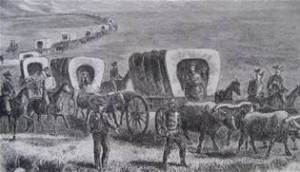Motivational speaker and author Matthew Kelly has a new book due out soon and he has been sharing excerpts from the book, Life is Messy. A recent one got me to thinking about the “zones” of change: the ending, the neutral zone (which I call the wilderness), and the new beginning.
All change begins with something ending. The ending is followed by one roaming the neutral zone/the wilderness, a zone we must go through before starting our new beginning. Kelly has said, “It’s a mistake to focus on the negative. It’s a mistake sometimes to think the bad stuff is all bad. It is often in the middle of nowhere, lost and confused, when nothing makes sense, that we find ourselves and come to know ourselves in new and brilliant ways.”
His last sentence “It is often in the middle of nowhere, lost and confused, when nothing makes sense, that we find ourselves and come to know ourselves in new and brilliant ways” perfectly describes the neutral zone/the wilderness of change.
The wilderness is a place where the old and the new overlap. I liken this wilderness to what the early pioneers felt when they ventured beyond their “comfort zone.” For them, there was a lot of confusion with new sights, sounds, and experiences. The rules they followed in their former place no longer applied, yet new rules for this new territory, this “wilderness,” had not yet been established. The further they got on their journey, they could no longer see where they came from and they couldn’t see exactly where they were going. At times there was probably a sense of feeling lost and at other times these pioneers had to gain a new sense of direction. There had to be much fear of the unknown in the new, the changed environment.
After ending something and letting go, we have probably entered the wilderness if we:
- are excited and overwhelmed by the possibilities after ending something or letting go;
- have a feeling of being lost and scared of making a wrong decision or choosing the wrong path;
- have a strong desire to try something different;
- feel confused;
- are worried or concerned about the future;
- sense that the change is a good one, but we just don’t know how we are going to make it work; and,
- question ourselves (Who am I?, What purpose do I now serve?), what happened, and the next steps (What comes next? What is my new reality?).
Why, if this neutral zone, this wilderness, is so “wild” and further engenders confusion and fear is it important when dealing with change? It is because out of the confusion and fear, new ideas, new discoveries, reorientations, and creativity take center stage and help us toward something we might be able to accept, something that might make our life better. It is because in this zone of change we find ourselves.
Some “travel” tips while roaming the wilderness include:
- Be observant. Watch for “footprints in the snow” or those signs of how things are evolving. Capitalize on the moments of creativity.
- Set short-term goals. Where do things need to be in a day? A week? At the end of the month? What should things look like in a day, week, or month?
- Reward and reinforce. After trying something, whether it is a success or a failure, give the thumbs up or words of encouragement. Treating oneself or others to something is a nice acknowledgement of the efforts. Giving out something that is symbolic of whatever was tried provides a reward as well as a visual reminder of the effort.
- Talk, talk, and talk some more. Talk about feelings, fears, frustrations, anxieties, and ideas.
- Experiment with the ideas that come to the surface. Use trial and error in deciding what to do, what direction in which to go, who to see.
- Be patient. Give others and oneself time to work through the thoughts, ideas, and suggestions. Periodically step back and evaluate all that has been going on while roaming the wilderness.
There is no doubt that the wilderness is a scary place; it is often uncomfortable in the wilderness. When in the wilderness, we have given up something with which we were once very comfortable, but we have not yet become comfortable with the “new place.” If we get scared enough, we may be tempted to fall back on the former, the old; we may try to slip back into our comfort zone. This is all normal and natural. In fact, time in the wilderness is not linear. It is more like start, stop, loop back, move forward, step back, surge forward. Time in the wilderness is more spiral – or cork screw-shaped than linear or one dimensional. But, time in the wilderness is well spent and when the journey is finished, we will be ready to move on and make a successful new beginning. We will “…find ourselves and come to know ourselves in new and brilliant ways.”



















